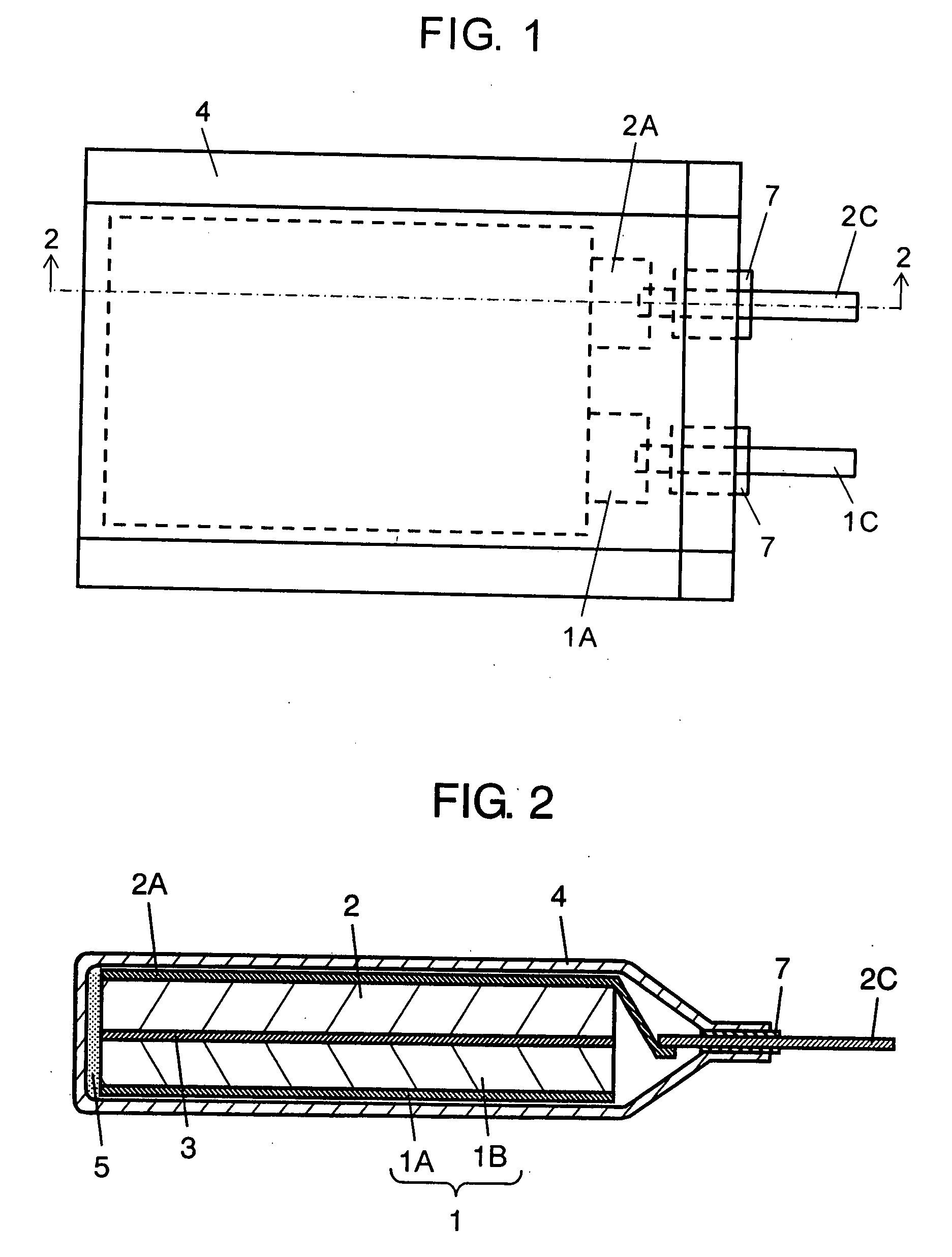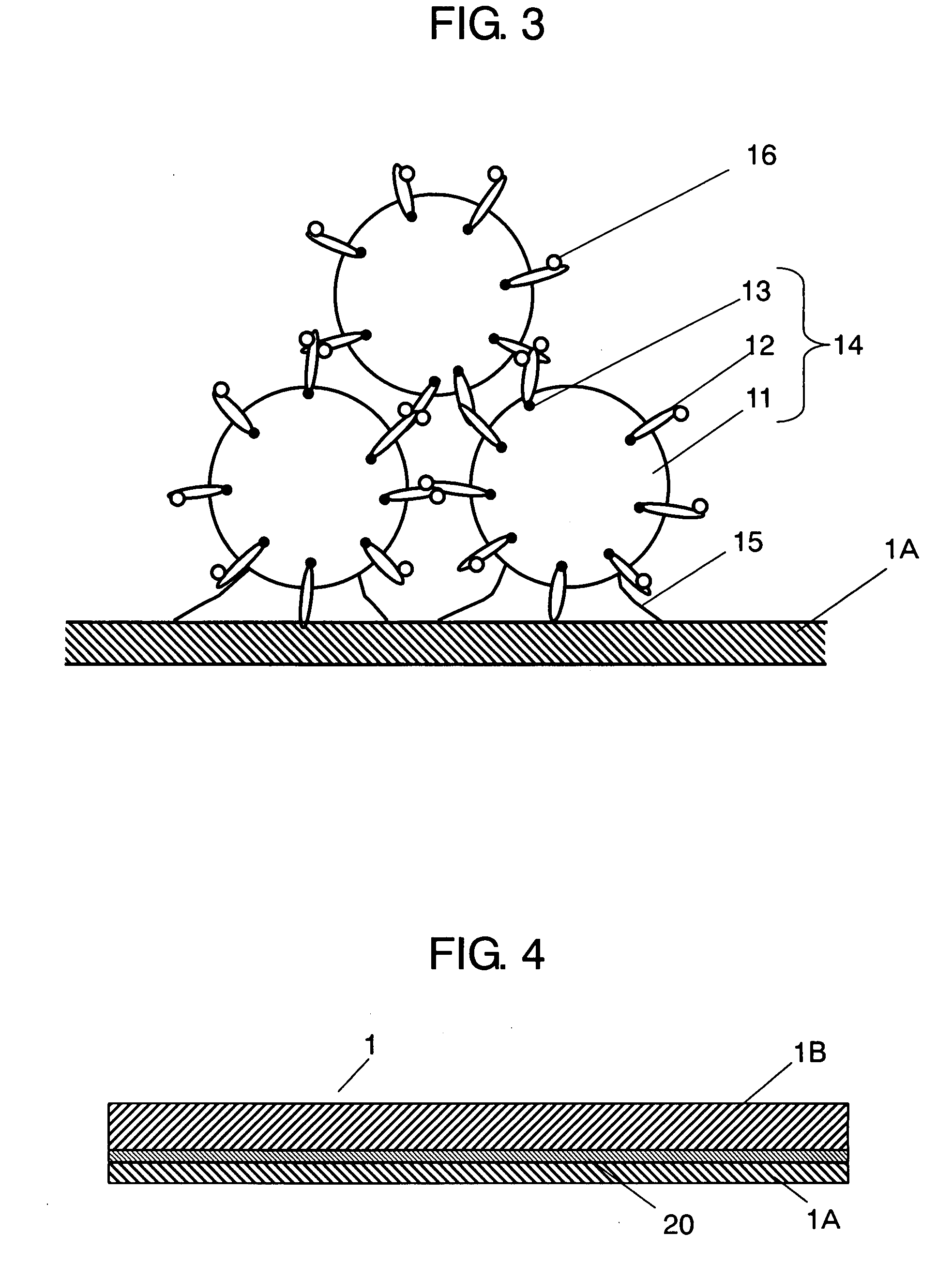Negative Electrode for Non-Aqueous Electrolyte Secondary Batteries, and Non-Aqueous Electrolyte Secondary Battery Having the Same
a technology of negative electrode and secondary battery, which is applied in the direction of cell components, final product manufacturing, sustainable manufacturing/processing, etc., can solve the problems of unsatisfactory charge-discharge cycle characteristics (hereinafter cycle characteristics), the active material volume of the negative electrode changes, and the conductivity among the particles is lowered, so as to promote the growth of cnf and suppress the increase in the impedance of the whole negative electrode. , the effect of high cycle characteristics
- Summary
- Abstract
- Description
- Claims
- Application Information
AI Technical Summary
Benefits of technology
Problems solved by technology
Method used
Image
Examples
Embodiment Construction
[0030]An exemplary embodiment of the present invention will be described hereinafter with reference to drawings. The present invention is not limited to the following description except for its fundamental features.
First Exemplar Embodiment
[0031]FIG. 1 is a transparent plan view showing the structure of a model cell produced to evaluate a negative electrode for non-aqueous electrolyte secondary batteries of the first exemplary embodiment of the present invention. FIG. 2 is a cross sectional view taken along line 1B-1B. FIG. 3 is a schematic diagram showing a structure of a mixture layer near a current collector.
[0032]Negative electrode 1 shown in FIGS. 1 and 2 has mixture layer 1B that is disposed on current collector 1A and electrically connected to current collector 1A. As shown in FIG. 3, mixture layer 1B contains an assembly of composite negative electrode active material 14. Each assembly of composite negative electrode active material 14 contains a silicon-containing particle ...
PUM
 Login to View More
Login to View More Abstract
Description
Claims
Application Information
 Login to View More
Login to View More - R&D
- Intellectual Property
- Life Sciences
- Materials
- Tech Scout
- Unparalleled Data Quality
- Higher Quality Content
- 60% Fewer Hallucinations
Browse by: Latest US Patents, China's latest patents, Technical Efficacy Thesaurus, Application Domain, Technology Topic, Popular Technical Reports.
© 2025 PatSnap. All rights reserved.Legal|Privacy policy|Modern Slavery Act Transparency Statement|Sitemap|About US| Contact US: help@patsnap.com



